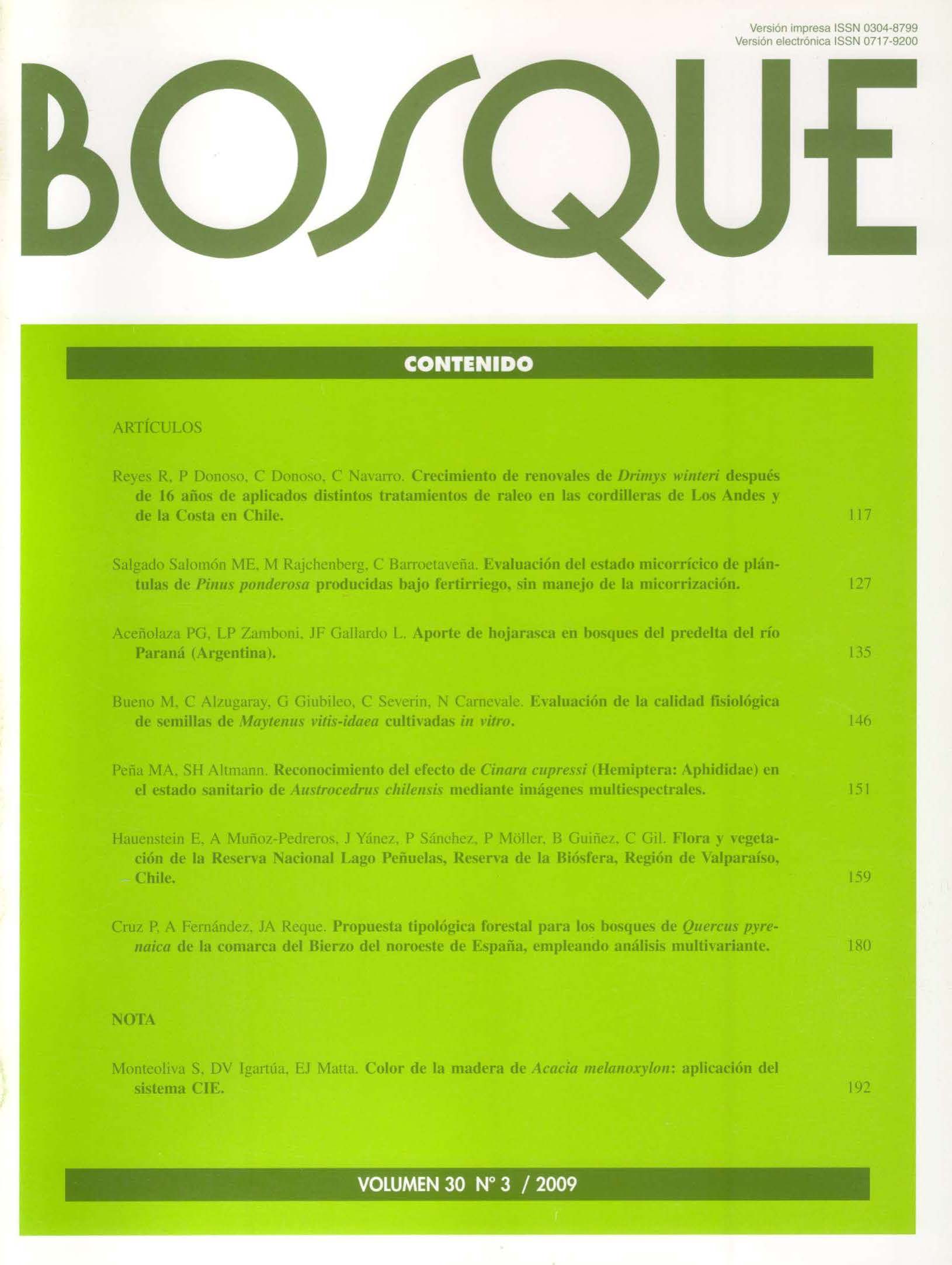Main Article Content
Dec 31, 2009
Abstract
This work examined the utility of multispectral remote sensing to recognize the effects produced by infestation of the cypress aphid (Cinara cupressi) in the sanitary condition of the cordillera cypress (Austrocedrus chilensis). The study area is Fundo Los Cipreses, located in the foothills sector of the San Fernando County, Maule Region of Chile. Procedures focused on the recognition of variations in foliage vigor and turgidity of infested A. chilensis using ASTER images acquired at periods of preinfestation (March, 2003) and infestation (March, 2008). Both parameters were measured by the normalized difference vegetation index (NDVI) and the normalized difference water index (NDWI), respectively, for a set of geographic points corresponding to two main damage categories detected in the field (moderate and severe). In the study period a clear decrease in the NDVI and NDWI of the severely damaged individuals was evidenced, while those individuals that present a moderate damage did not show important differences for both indices. Results suggest that multispectral images are useful to detect severe damage in a stand. In the future it is expected that further development of the capacities of this type of product, complemented with hyperspectral images, allow for effective monitoring of C. cupressi infestation in other areas of the country.


